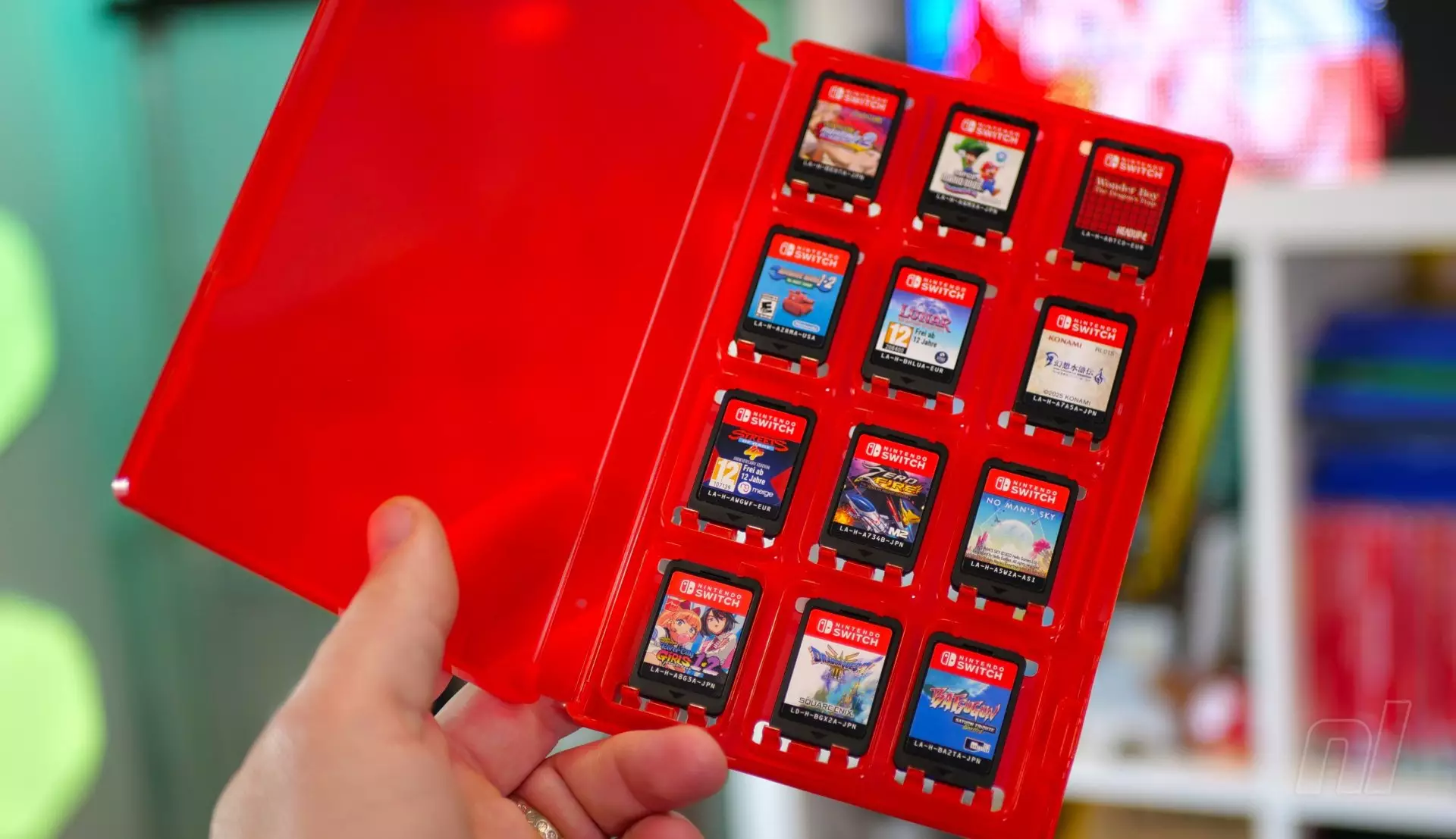As the gaming world watches with bated breath for Nintendo’s next-gen console, the Switch 2, there’s a wave of excitement around the associated accessories, notably those from Genki. Branding is crucial in the gaming industry, and while Genki has recently found itself embroiled in legal tussles with Nintendo, it has successfully managed to capture attention with innovative accessories aimed at improving players’ experiences. Among these accessories is the “Mimic Chest,” designed as a solution for the perennial problem of game cartridge storage. While this offering provides a new perspective on storage with a fresh design, it also invites scrutiny on its practicality.
The Concept Behind the Mimic Chest
At first glance, the Mimic Chest appears sleek and visually appealing, featuring three red plastic cases styled similarly to the standard Switch cases. Each case is purported to hold up to twelve game cartridges, promoting an impressive collective capacity of 36 games across the trio. As gamers scrutinize their ever-expanding game libraries, a product that consolidates multiple cartridges into one manageable unit sounds appealing. However, this very premise raises a series of questions regarding its utility in real-world applications.
While I appreciate the thought behind offering a stackable storage solution, the practicality diminishes significantly upon closer examination. The cases themselves are larger and less robust than those provided by competitors, such as Hori, which has some compelling arguments regarding portability and ease of use. Gamers often clarify the need for accessories to seamlessly integrate into their lives, especially when on the move, yet the Mimic Chest’s larger design feels cumbersome in comparison.
Form vs. Function: A Struggle in Design
One of the most evident drawbacks relates to the lack of a cover inlay. Yes, Genki has indicated intentions to provide alternatives for players to print their own, but as it currently stands, this feels more like an afterthought than full-fledged functionality. Without this critical design element, the cases bear an oddity when displayed on a shelf, clashing with the aesthetic appeal usually associated with organized game collections. Contrast this with traditional cases, which allow for personalized labeling, making it simpler to locate games rapidly.
Moreover, the fit of the cartridges within the slots raises an essential concern. As I tested the Mimic Chest, I noticed that the cartridges rattled during movement. While this may seem like a minor inconvenience, it contributes to a broader narrative surrounding the product’s execution. For a device marketed as a storage solution, this inconsistency plays into the perception of fragility and unreliability.
A Unique Solution or Just a Novelty?
Despite my skepticism surrounding its practicality, I acknowledge that some players might find value in the coherence of grouped cartridges. The Mimic Chest seems tailored for those who desire to declutter and centralize their Switch gaming experience. However, the real question lies in whether this prioritization of centralization overtakes the need for speed and accessibility, which most gamers crave. Popping out a single cartridge from a consolidated case can become unwieldy during frantic gaming sessions, particularly when tentatively navigating through titles.
For the price tag of $19.99, it stands as an attractive proposition compared to other products on the market. Yet, I can’t shake the feeling that enticing price points often mask underlying impracticalities. When compared with the likes of Hori’s cases—lightweight, portable, and accommodating up to 24 games with an engaging design—the Mimic Chest seems less an essential buy and more a passing curiosity.
The Takeaway: A Product Awaiting Refinement
As the gaming landscape continues to evolve, peripherals like the Mimic Chest need to align more closely with players’ needs rather than focusing solely on a single aspect of functionality. While Genki’s innovation is commendable, the product falls short of being a home run. Future iterations or revisions might bridge the divide between innovative design and practical utility, ensuring that players’ experiences are as seamless as possible. Ultimately, advancements in gaming accessories should not only lead to creativity in concept but also maintain an unwavering commitment to the functionality that players genuinely require.

